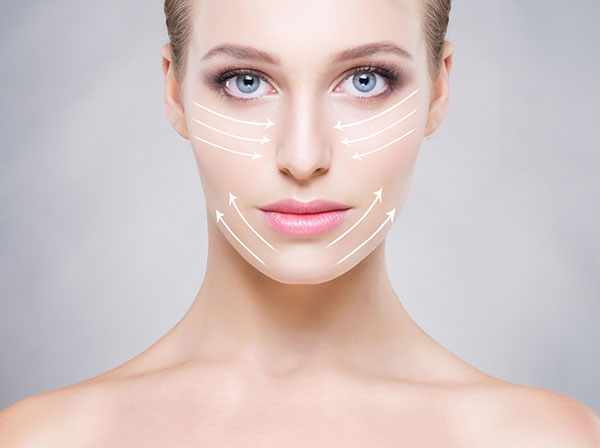Beyond Age: Non-Surgical Approaches to Face Lifting

In order to treat a condition effectively, it’s vital to understand its underlying causes. As we age, our bodies undergo a variety of changes, and our skin is no exception. Sagging skin is a natural consequence of aging, which can also be accelerated by various lifestyle and environmental factors.
The most common cause of sagging skin is the loss of collagen and elastin, proteins responsible for maintaining the skin’s elasticity and firmness. Over time, our bodies produce less of these proteins, leading to a lack of support in the skin’s structure, which results in sagging.
Additionally, the effects of gravity over time cause skin to stretch and sag, as the skin loses its ability to bounce back. Lifestyle factors such as unhealthy diet, smoking, and excessive alcohol consumption can exacerbate the problem, as they contribute to the breakdown of collagen and elastin.
Rapid weight loss can also lead to sagging skin, as the skin doesn’t have enough time to retract after the loss of underlying fat. Finally, prolonged sun exposure leads to premature aging of the skin, contributing to the formation of wrinkles and sagging.
What are the Best Treatments for Sagging Skin
When it comes to non-surgical face lifting treatments for sagging skin, BTX (Botulinum toxin) treatments have been at the forefront. Popularly known as Botox, these treatments involve injecting a neurotoxic protein into the affected areas of the skin. BTX temporarily blocks signals from the nerves to the muscles, which relaxes and softens the wrinkles and lines caused by facial expressions. This effect indirectly lifts sagging skin by providing a smoother, more youthful appearance. Regular BTX treatments are needed to maintain the desired results, as the effects gradually wear off over a period of three to six months.
Harnessing the Potential of HIFU and Thermage
High-intensity focused ultrasound (HIFU) and Thermage are two other non-surgical treatments that have shown promising results in treating sagging skin. Both treatments rely on the body’s natural regenerative processes for skin tightening.
HIFU delivers focused ultrasound energy to the deeper layers of the skin, causing slight damage that stimulates the production of new collagen. The resulting collagen boost helps to gradually tighten and lift the skin over time. This treatment has been proven particularly effective in addressing sagging in the face and neck area.
Thermage, on the other hand, uses radiofrequency energy to heat the deeper layers of the skin, which stimulates collagen production and leads to skin tightening over time. One of the advantages of Thermage is that results can often be seen after a single treatment.
Thread Lifts and Dermal Fillers
Thread lifts and dermal fillers have also become increasingly popular as non-surgical treatments for sagging skin. Thread lifts involve the insertion of temporary sutures under the skin to lift and tighten it. The threads not only provide an immediate lifting effect but also provoke the body’s healing response, causing a surge in collagen production in the treated areas.
Dermal fillers, composed of substances like hyaluronic acid, are injected into the skin to replace lost volume and stimulate collagen production. They provide immediate results and are particularly effective for treating sagging skin in the lower face and around the mouth. The effects of dermal fillers can last from six months to over a year, depending on the type of filler used and the individual’s response.
Laser Treatments
Laser treatments represent another cutting-edge, non-surgical face lifting treatment to address sagging skin. These treatments work by delivering short bursts of laser light to the skin, which removes the outer layer while heating the underlying skin. This process encourages the growth of new, smoother, and tighter skin.
In conclusion, the battle against sagging skin no longer requires going under the knife. With a myriad of non-surgical treatments available, each having their own strengths and advantages, individuals can now choose the best suited approach to address their skin concerns. As always, consultation with a certified dermatologist is crucial before undergoing any of these treatments to ensure safety and effectiveness.






